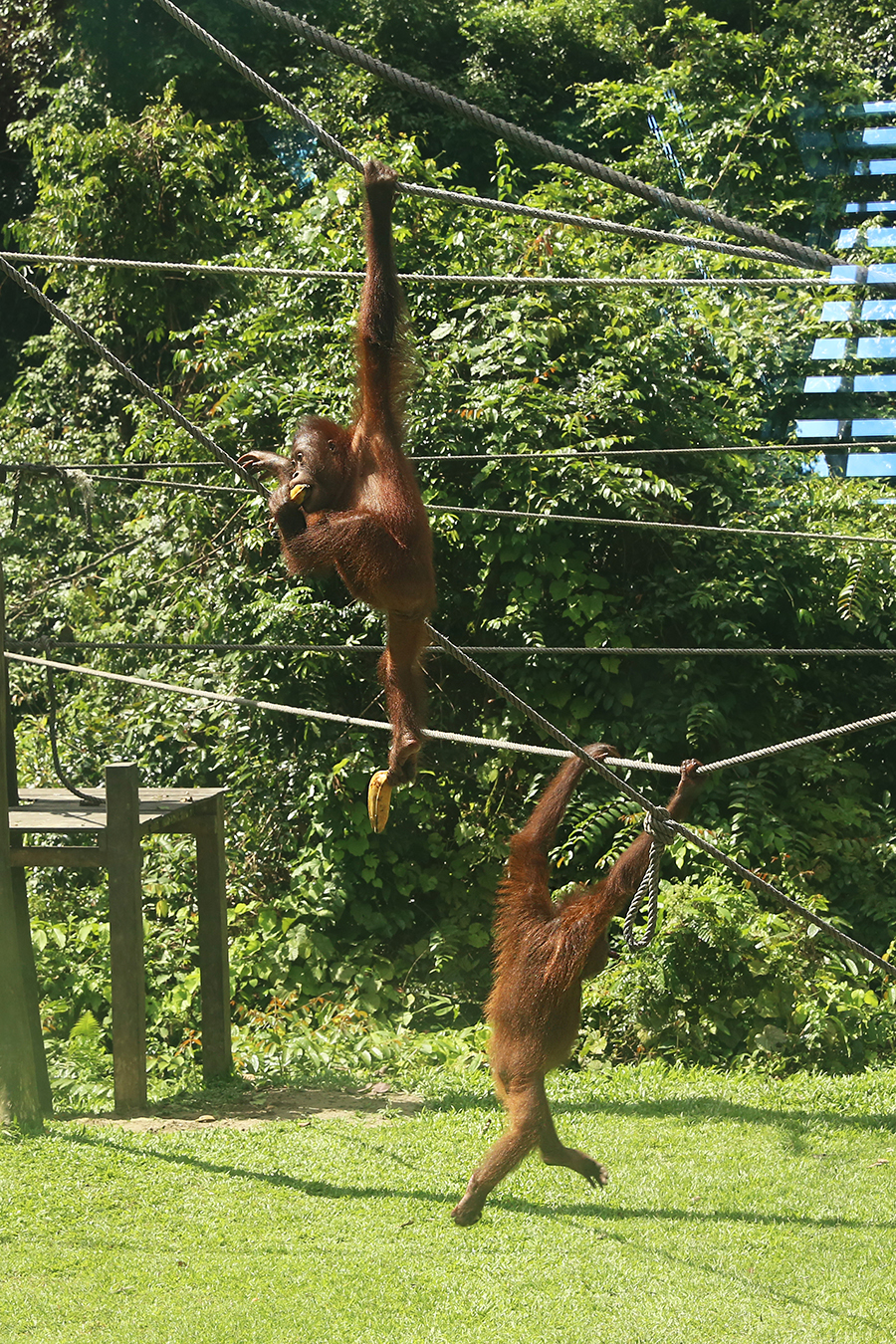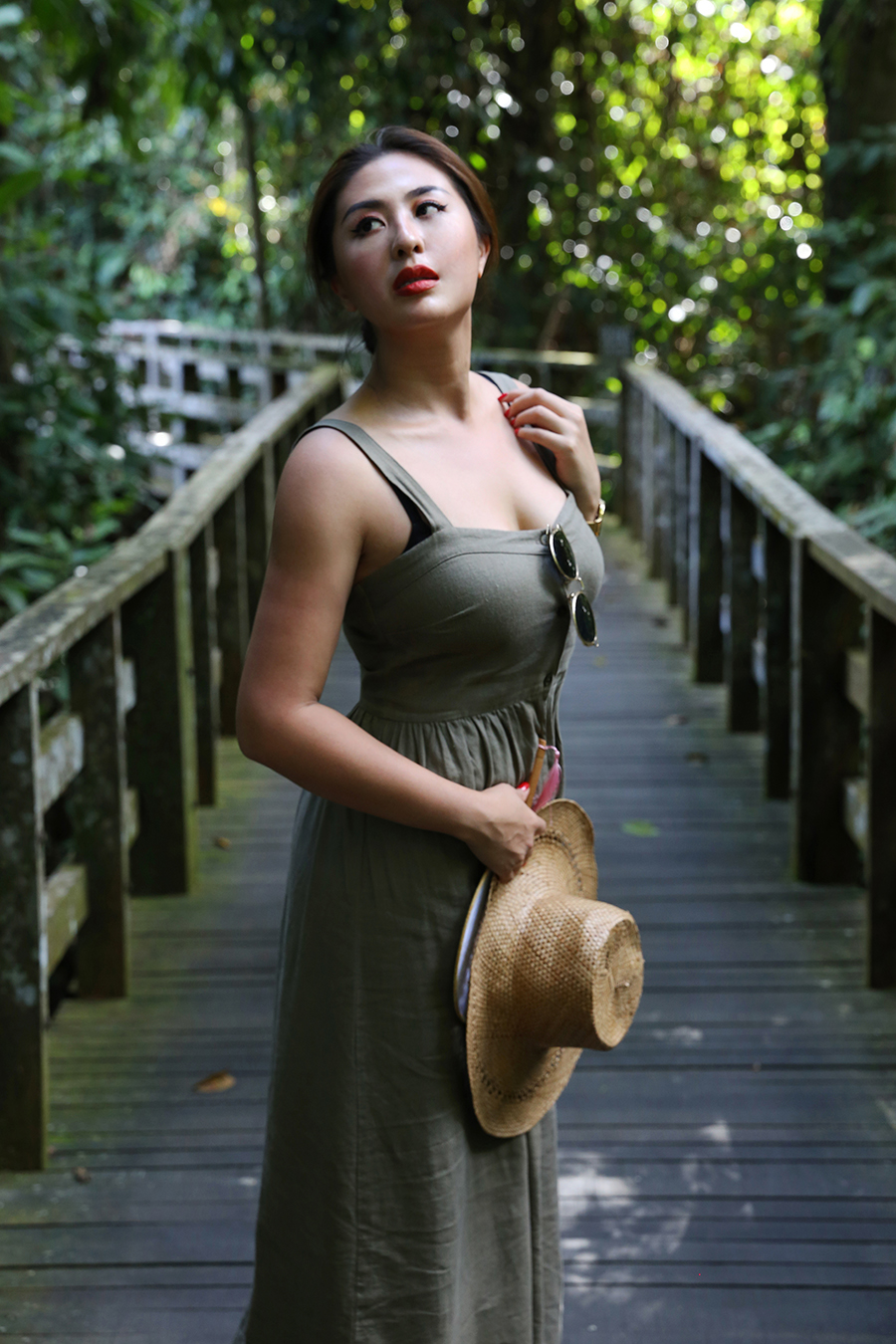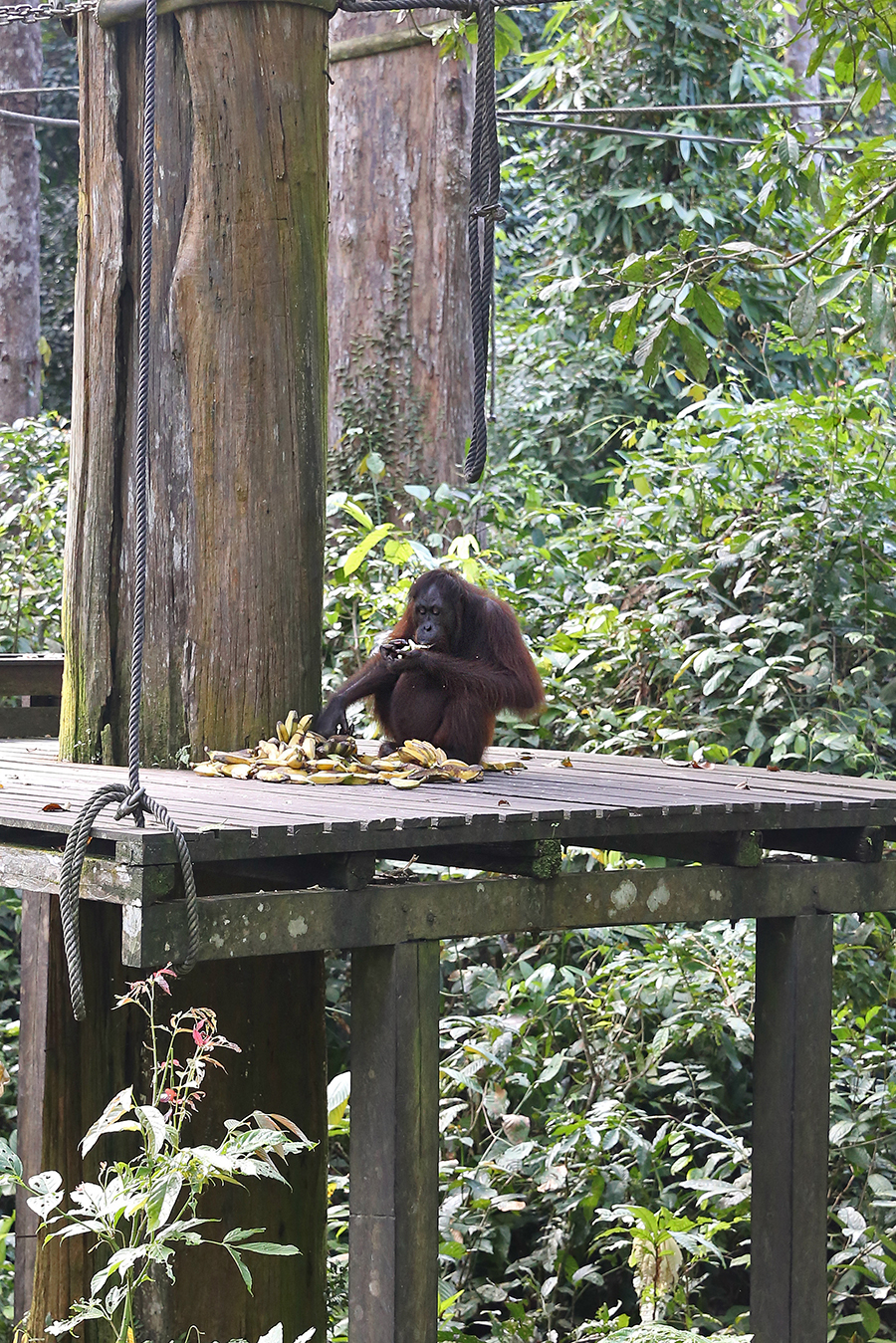Going Ape: Desperately Seeking a 'Man of the Forest' at SEPILOK ORANGUTAN REHABILITATION CENTRE IN SABAH, NORTH BORNEO
🍌🍌🍌
How often does one get the opportunity to help a dear friend tick an experience off their bucket list in your home country, in a foreign (to them) language that you not only happen to be fluent in but one they’ve never heard you properly speak? Baby, this is my time to shine. I may have Dreamed of Africa but Luxy has always dreamt of Borneo since she was little: from her childhood dream of having an orangutan sanctuary in her back garden to having her own ape friend who’d follow her to school (I’m just cracking up at the visual of 12-year old her, dressed in a chantily lace frock, hosting a tea party in the English countryside for orangutans wearing frilly bonnets. More tea, vicar? Ooh ooh aah aah!). Wish no more, baby, because YipAdvisor is about to make it her monkey business to make your dream a reality. It’s time to go bananas in Borneo...
🍌🍌🍌
ALL PHOTOS OF ME BY LUX LIFE BLOG. EEE BB!
The best place in the world to see an orangutan - Malay for “man of the forest” - in its natural habitat while getting an educational experience is Sepilok Orangutan Rehabilitation Centre. The centre is quite literally in my grandparent’s backyard. My mother grew up in Sabah, one of the two East Malaysian states that make up North Borneo and every Chinese New Year we make the traditional balik kampung journey to Kota Kinabalu, which is but an hour’s flight from Sandakan where Sepilok Orangutan Rehabilitation Centre is located.
The rare and endangered orangutan, native to Indonesia and Malaysia, can now only be found in the rainforests of Sumatra and Borneo; and even there their habitats are shrinking at an alarming rate. Since 1964, Orangutan Appeal UK and Wildlife Sabah have joined forces to create Sepilok Orangutan Rehabilitation Centre: a sanctuary dedicated to the rescue, rehabilitation, and protection of orangutans. This safe space includes a medical facility for wildlife, a nursery for young orphan orangutans, an educational centre for visitors who flock to Sepilok to see the apes, as well as 43 square kilometres of protected land at the edge of Kabili Sepilok Forest Reserve where around 60 to 80 orangutans live freely.
Slathered in sunscreen and mosquito repellent, wearing sensible shoes and breathable summer dresses (I’d even bought a khaki-coloured safari-style dress for the occassion), Luxy and I trekked through the jungle and into the orangutan’s natural habitat.
10:00 AM
The main draw at Sepilok Orangutan Rehabilitation Centre is the feeding platform. Twice a day - at 10:00am and at 3:00pm - a ranger arrives bearing a basket heaving with fruit then unloads the booty on the platform, where the resident forest creatures know they can expect a twice-daily meal. The selection of food is purposely limited to make it as boring as possibly, which encourages the orangutans to not rely entirely on humans but to instead fend for themselves.
The ideal scenario is for the rehabilitated orangutans to be so independent and adept at finding their own food that they show up for feedings only to supplement their diet, as is often the case with pregnant females looking for an extra somethin’ somethin’. It just so happened that it was fruiting season, so the orangutans were spoilt for choice by nature's bounty and none of them bothered showing up for the morning feed. Oh. We did, however, get to see a family of macaque monkeys (the ever-thriving opportunists of the primate world) swoop in on the unclaimed fruit and decimate it before we could say “Well I’ll be a monkey’s uncle...”
Slightly disappointed but undeterred, Luxy and I decided to pass some time before the afternoon feed at the nursery, where we could watch baby orangutans learn how to be...well, orangutans.
The outdoor nursery is where visitors, from inside a glass-walled building, can observe the fledglings. Sadly, many baby orangutans are orphaned as a result of illegal logging and deforestation, others orphaned when their mothers are killed by poachers looking to sell the babies as exotic pets. The less unfortunate ones are rescued by Sepilok, where they are nursed back to health and then embark on a long journey of learning how to be wild. Essential skills like foraging for food, climbing, learning to keep off the ground - where parasites and predators would lurk in their natural habitat - are painstakingly taught over a course of 7 years by the dedicated staff at Sepilok and also with the ‘buddy system’ which pairs young un’s with older, more experienced orangutans who will show them the ropes, as it were.
3:00PM
“I hope I won’t have to put on a monkey suit and do my best orangutan impression so my friend can see one in the wild...”
By then, Luxy and I had whiled away the hours at the nursery, the cafeteria, and Sepilok’s air-conditioned museum where we shamelessly kicked off our shoes then made ourselves at home on the carpeted floors. We had been up and running for 10 hours, having caught the morning flight from Kota Kinabalu to Sandakan, but we were damned if were weren’t going to make it to the second feeding of the day in the hope of seeing an orangutan in its natural habitat. Thankfully the hordes of loud tourists and their screeching spawn (I’ll let you guess what nationality they were) that showed up for the morning feed were nowhere to be found as loud noises scare the orangutans away, but even so, I was more tentative than optimistic. Heck, I was so worried at Luxy coming all the way to Sabah and leaving empty-handed - or should I say leaving empty-eyed - that I distractedly dropped my camera lens cap onto the jungle floor (somewhere out there an orangutan is wearing a 24-70mm 2.8 USM II lens cap as a pendant)...
...but as luck would have it, we were about to see what we came for, and then some.
We looked up, and saw it: a lone orangutan sitting in a tree, above the feeding platform, waiting patiently for the afternoon meal. As the ranger approached, the orangutan clambered down, not even waiting for the ranger to finish unloading the basket before helping itself to the bounty. Once it was clear that it was the only guest at this feeding, the orangutan took its time: methodically sorting the best bananas and then sitting on them to keep it safe from theiving jungle squirrels, before feasting on the first choice - bright orange papayas.
Orangutan, sighted. Bucket list, ticked. And then Luxy got more than she had hoped for...
...the orangutan decided to stalk us.
The orangutan could’ve very well chosen to slip away into the jungle after its meal, but instead decided to walk, in a very human fashion, along the wooden path designed for visitors. The orangutan clambered right up to the amazed crowd - barely 3 feet away - and gave everyone an expecting look. Right away, a ranger materialised (you can just about see him behind Luxy, wearing blue) and tutted at the ape: “Mimi, jalan. Mimi, pergi.” (Mimi, walk. Mimi, go). The orangutan's name was Mimi, and she was pregnant! Not only had we seen an orangutan in the wild, we had seen 1.5 of them! Mimi was one of the 5 or 6 females at Sepilok that were currently pregnant. Mimi obviously had pregnancy cravings as she had shown up at the feeding platform for papaya, and it dawned on me that she might have stalked us humans hoping that she could charm one of us into offering her a snack.
The ranger clearly knew what Mimi was up to, and Mimi clearly knew him well. The ranger kept Mimi moving along and at a safe distance from the visitors as human interaction is not only counterproductive to the rehabilitation process but also potentially dangerous as the orangutans are wild creatures after all. Mimi would walk as slowly as possible before stopping altogether to let us catch up with her, before being repeatedly chided by the ranger and told to hit the road.
WHAT TO KNOW BEFORE YOU GO:
When you’re in the region, I highly recommend making Kota Kinabalu - the capital city of Sabah - your base. Take the 7:00am flight via Air Asia from Kota Kinabalu and arrive in Sandakan at 7:45am. From the airport it’s a 20 minute taxi ride to Sepilok Orangutan Rehabilitation Centre that should cost RM40 (pre-paid taxis can be bought at a taxi stand in the airport itself).
The morning feed at 10:00am usually has more orangutans, while the 3:00pm feed is less crowded. For a prime position, arrive at the feeding platform about 30 minutes before feeding times start. In between the 2 daily feeds you could visit Labuk Bay Proboscis Monkey Sanctuary (a 25 minute taxi ride from Sepilok) in time for the 11:30am feed at Platform B, or the Bornean Sun Bear Conservation Centre located on the same premises as Sepilok. A visit to all three wildlife centres can be achieved in time to catch the 6:05pm flight back to Kota Kinabalu.
Entrance fees to Sepilok Orangutan Rehabilitation Centre are RM5 for Malaysians and RM30 for non-Malaysians. The camera fee for lenses under 300mm is RM10.
Our chance encounter with Mimi as well as that game of cat and mouse (or rather of homosapien and hominidae) was the cherry on top of the cake that is Luxy’s first experience of seeing these noble apes in the wild. I couldn’t have been happier for her, and I'm so glad to have played a part in making her childhood dream come true.
Have you ever had an unexpected encounter of the wild kind? Did it make you go ape?
🙈🙊🙉
FURTHER READING:























